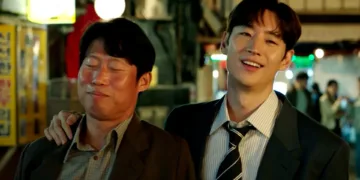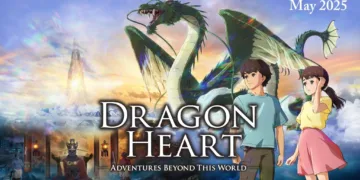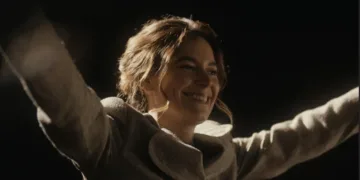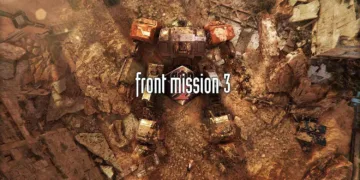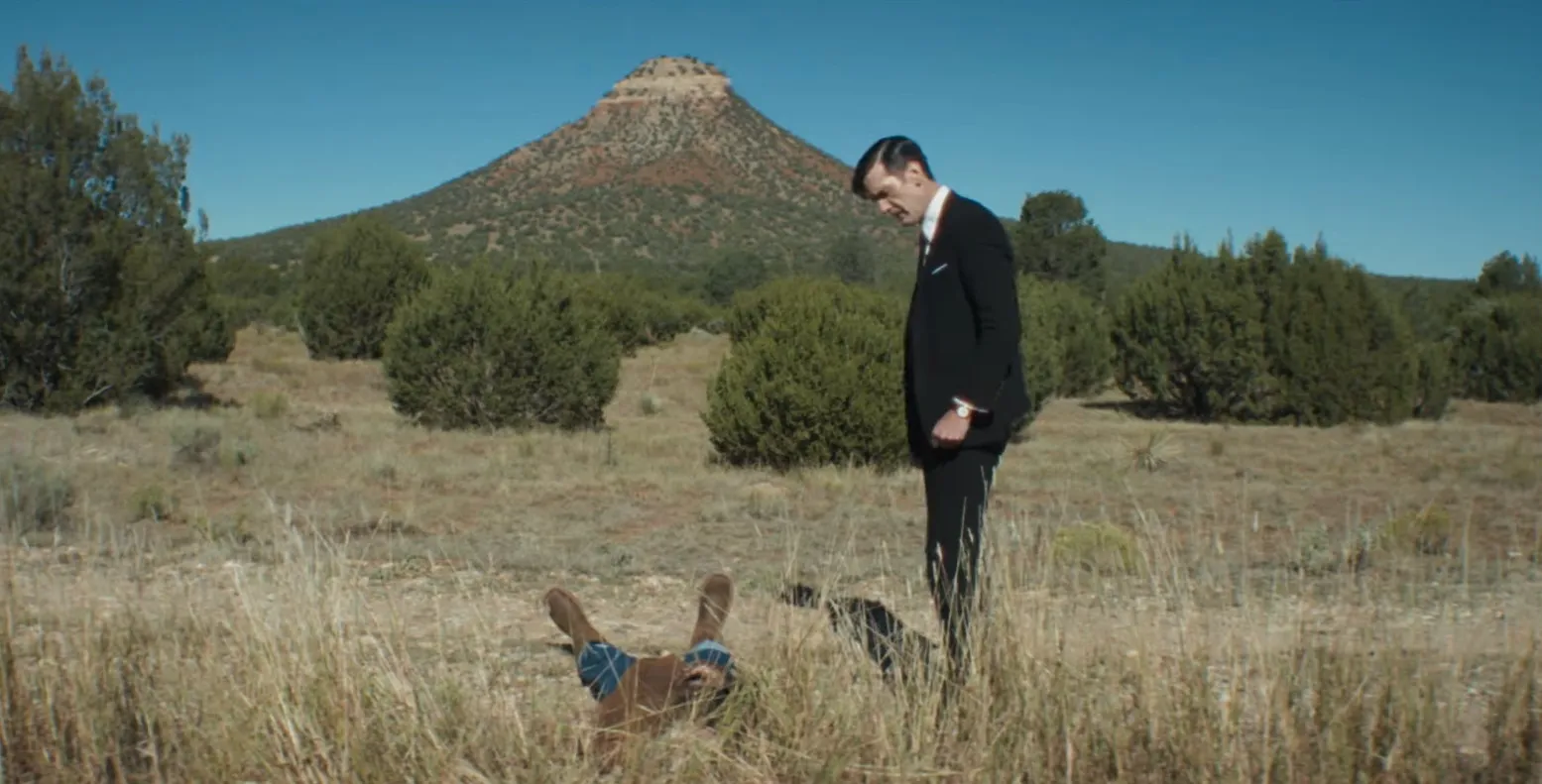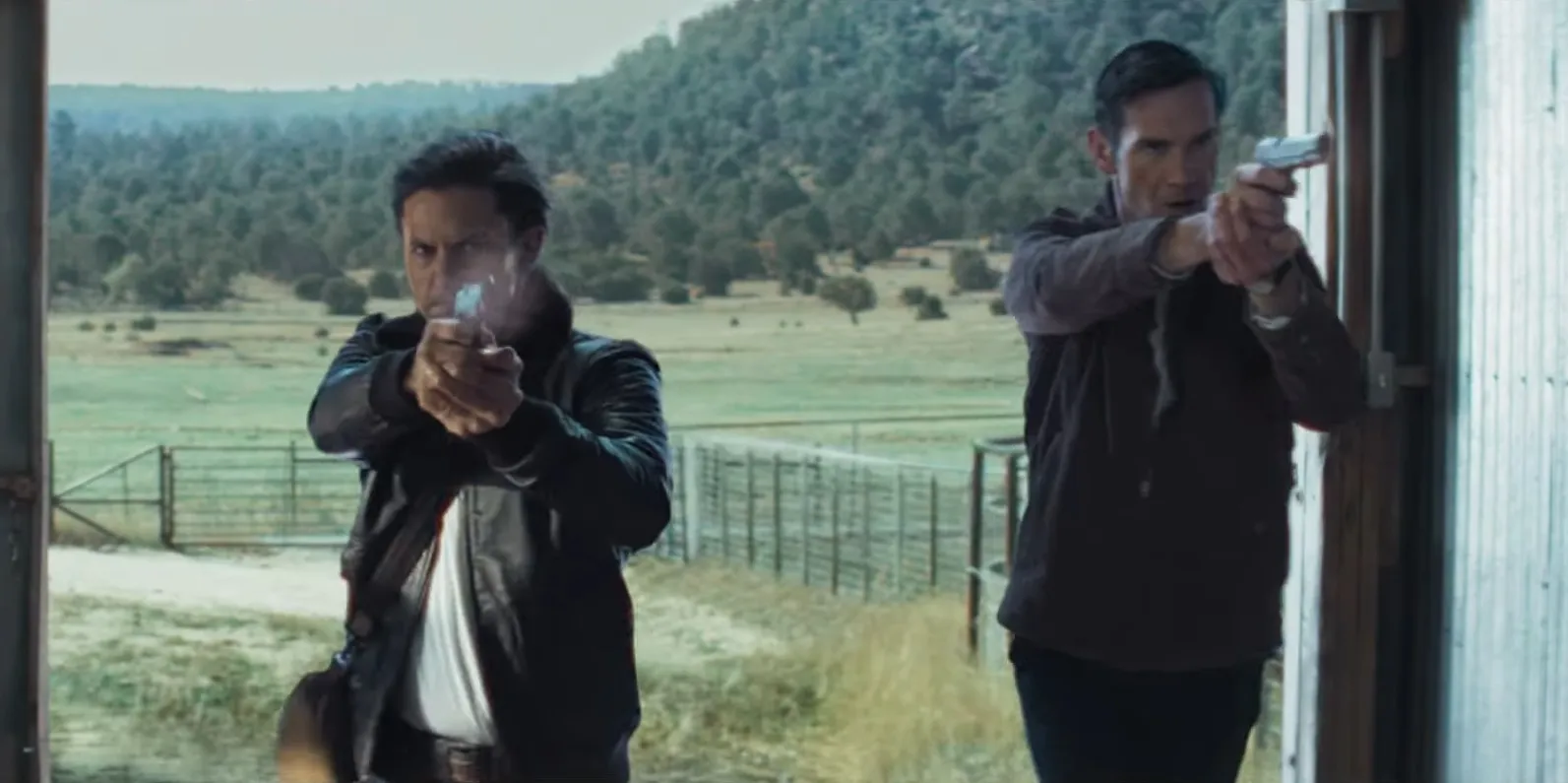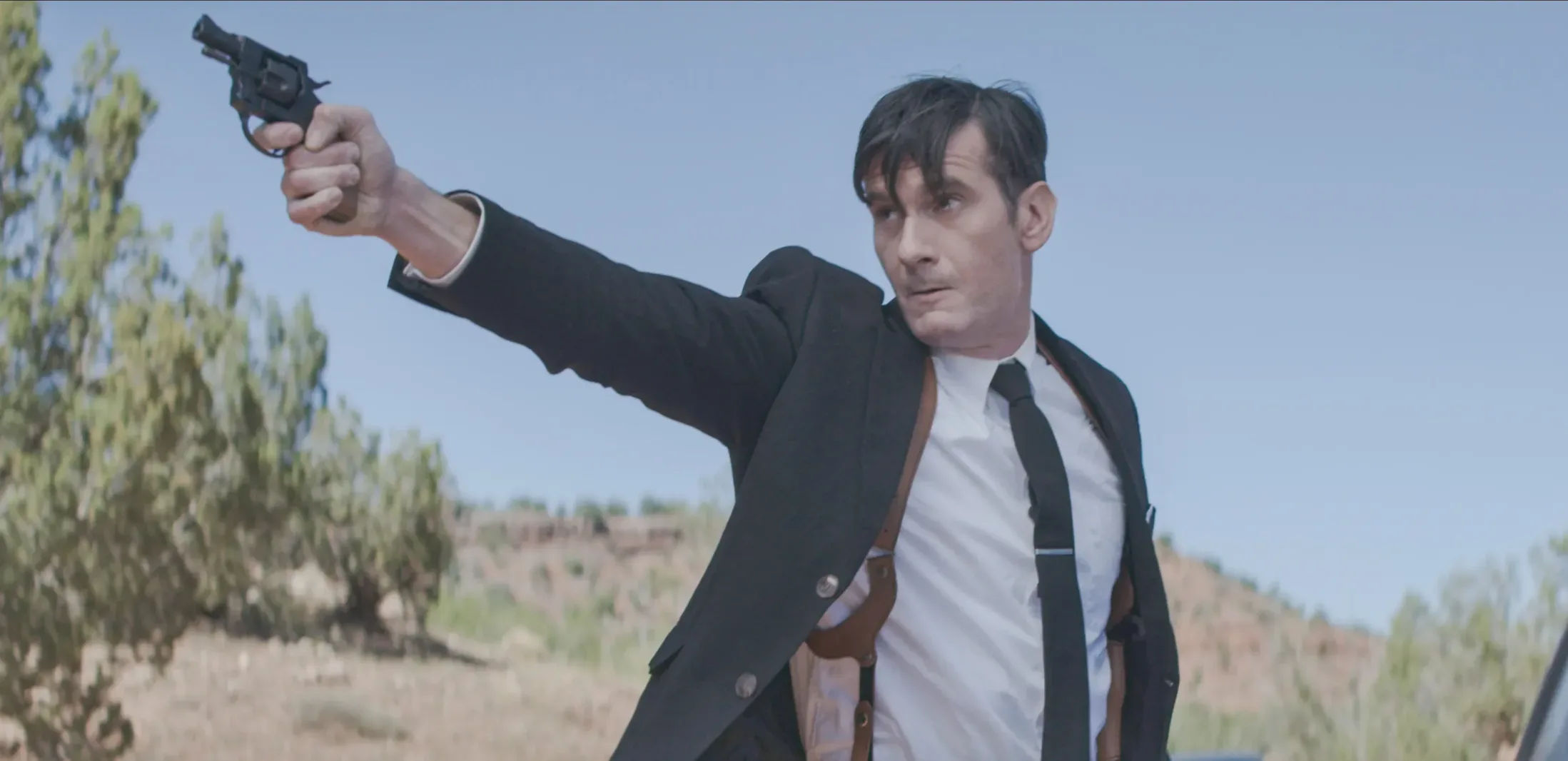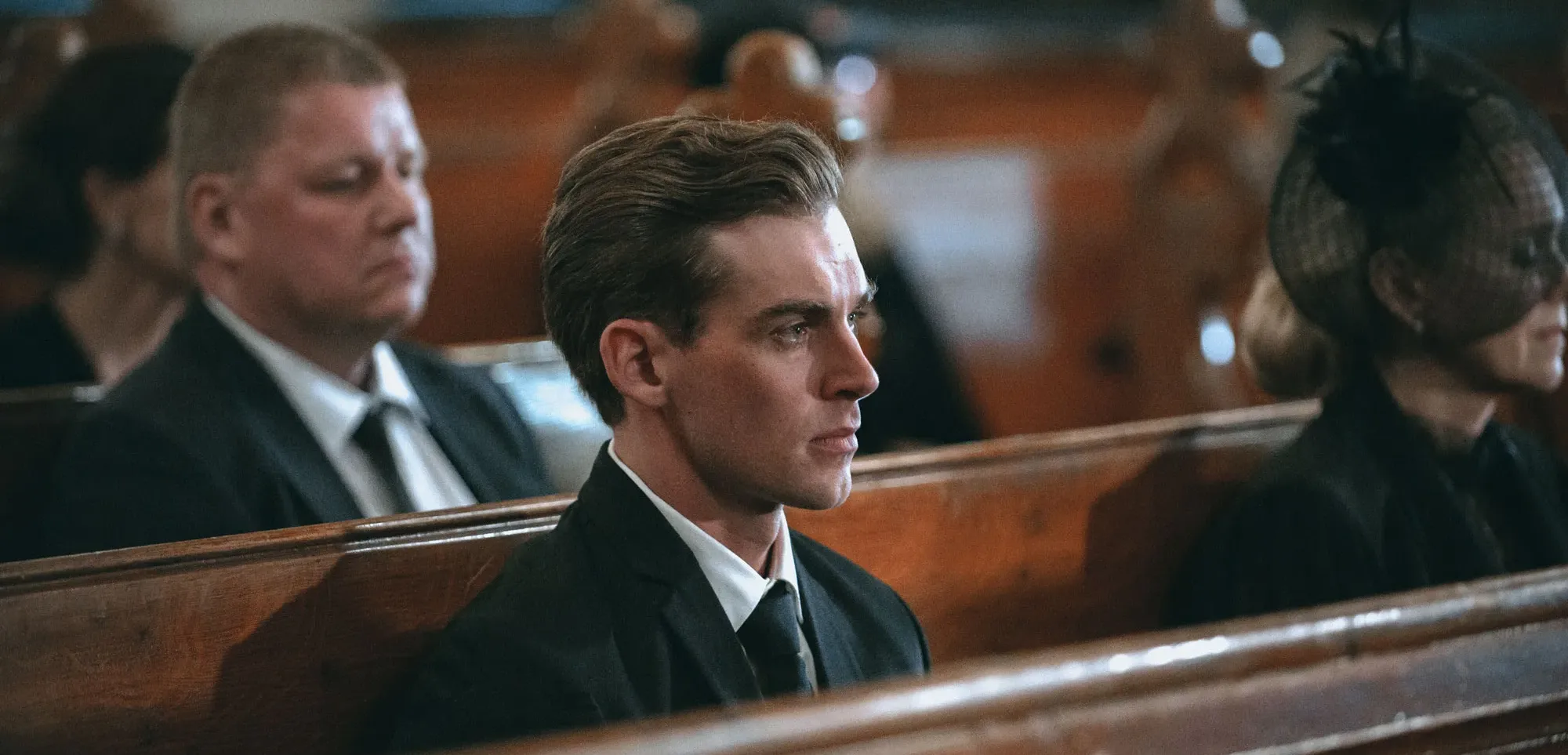Set against the stark, unforgiving backdrop of Nevada’s arid deserts in 1963, Laws of Man presents itself as a Cold War thriller that interrogates the human condition in times of political strife.
The film opens with two U.S. Marshals tasked with serving warrants in an environment where isolation is both physical and psychological—a fitting stage for examining the scars left by conflict (a notion that resonates with historical shifts of the period).
The narrative introduces marshals who confront not only local criminals but also their own inner demons. One character is burdened by memories of wartime experiences, his flashbacks offering a window into a troubled past that shadows his present. In contrast, his partner exhibits a reckless spirit, one that sparks both frustration and occasional wry amusement from the viewer.
This cinematic offering mixes the hard edges of traditional law enforcement with moments that tip into surreal exaggeration, a choice that serves to question the veracity of rigid authority.
Its portrayal of the desert is both a literal and metaphorical wasteland, evoking the isolation felt in times of national tension. Short, staccato sequences contrast with more expansive meditations on duty and memory, creating a layered narrative ripe for reflection.
Fractured Journeys: Narrative Ambition and Execution
In the opening act, we are introduced to marshals Frank Fenton and Tommy Morton—two figures embarking on a long, desolate drive into Nevada’s stark landscape, charged with arresting a formidable criminal.
Their initial mission, simple in its setup, quickly shatters into chaos as a violent clash erupts with Crash Mooncalf’s gang. This sudden burst of violence immediately sets a tone of raw, unpolished danger and hints at the precarious nature of the law in these isolated parts (a nod to the volatile mood of the era).
As the narrative unfolds into its middle phase, what began as a routine warrant service morphs into an unexpectedly tangled investigation. The marshals encounter a notorious land grabber, Benjamin Bonney, whose unruly sons add an extra twist of disorder.
Frank’s recurring flashbacks from World War II serve as grim reminders of past horrors, contrasting sharply with Tommy’s impulsive, almost careless approach—a juxtaposition that might remind one of historical figures caught between duty and personal demons.
The film introduces a series of secondary characters, such as a former FBI operative and a rather eccentric preacher, who muddy the waters further. This turn of events forces the audience to reconsider the real stakes at play—a conspiracy that hints at hidden layers beneath the surface of a simple criminal pursuit.
In the final stretch, the story escalates into confrontations that border on the absurd, with the narrative steering toward an unexpected twist that shocks the system. The pacing feels uneven at times, as moments of high tension collide with stretches that seem to run out of steam, leaving some narrative threads dangling.
Such leaps in the plot raise questions about the film’s capacity to hold its ambitions together, provoking both admiration and a wry smile at its audacious, if imperfect, narrative choices.
Masks and Mirrors: The Duality of Character in ‘Laws of Man’
Frank Fenton (Jacob Keohane) is portrayed as the embodiment of meticulous procedure and haunted duty. His unwavering adherence to protocol is continually undermined by vivid, jarring recollections of wartime missteps (one might call these moments “memory fissures”).
These flashbacks, though sporadic, serve as windows into a fractured psyche—a man wrestling with the ghosts of his past and the demands of an unforgiving present. His internal strife casts a long shadow over his actions, provoking thoughts on the lingering impact of historical conflicts on personal identity.
Tommy Morton (Jackson Rathbone) offers a stark counterpoint. His impulsive, almost reckless behavior paints him as a figure driven by raw instinct rather than disciplined duty. The energy he brings is both frenetic and oddly charming, injecting a touch of offhand humor into situations that might otherwise teeter on the edge of despair.
His impulsivity sparks moments of unexpected levity, though it often clashes with the measured approach of his partner. This interplay creates a kind of kinetic tension that is as unpredictable as it is thought-provoking.
Benjamin Bonney (Dermot Mulroney) strides into the narrative as a menacing force—a land grabber with a penchant for theatrics. His performance hints at a complexity beneath a veneer of villainy, yet the character occasionally flirts with caricature.
Meanwhile, Cassidy Whittaker (Harvey Keitel) and the ensemble of side characters introduce elements that range from offbeat mentorship to inadvertent comic relief (a reminder that not all wisdom wears a sober face).
The chemistry between Frank and Tommy is a study in contrasts. Their conflicting methods generate both friction and, in rare instances, moments of genuine camaraderie that resonate on a level reminiscent of historical partnerships forged in crisis. Each character’s personal history intersects with the overarching narrative, prompting reflections on duty, regret, and the unpredictable cost of service.
IV. Themes and Stylistic Elements: Reflections on Societal Shadows
The film wrestles with a tension between the rigidity of law enforcement and the chaotic reality of taking shortcuts when the system fails. The marshals’ struggle mirrors the pressure on institutions to maintain order in moments when survival demands improvisation (think of historical moments when rules bent under the weight of urgency).
War leaves its mark in subtle yet unignorable ways. One character’s persistent flashbacks serve as a grim reminder of battles fought long before the Nevada desert became a stage. This portrayal of personal trauma—marked by survivor’s guilt and the psychological remnants of conflict—evokes memories of past military crises that have altered lives and communities (a poignant commentary on the human cost of combat).
The paranoia simmering beneath the surface, reminiscent of Cold War-era suspicion, influences every twist and turn of the plot. A pervasive sense of distrust colors the actions of those on both sides of the law, hinting at secrets and hidden agendas.
Elements of noir and western storytelling merge with noticeable tension. Classic visual cues and narrative tropes cohabit the screen, at times blending in a way that underscores the chaos, and at other moments clashing in their attempt to define the film’s tone. The satire (or near-satire) sprinkled throughout critiques institutions and outdated dogmas; however, its effectiveness is mixed, leaving some absurd sequences to feel more like misfires than intentional humor.
The script, with its pseudo-hard-boiled dialogue, alternates between snappy repartee and awkward exposition. Such fluctuations in tone—ranging from deadpan to unexpectedly breezy—inject the narrative with moments that provoke both thought and a reluctant smile.
Aesthetic Disquiet: Crafting a Desert Mirage
The Nevada desert in this film stands as a barren canvas, its emptiness echoing the isolation experienced by characters wandering through its scorching vastness. The framing and lighting evoke a raw, almost unrefined portrayal of the past, with each shot seeming to capture an ephemeral moment suspended in time.
There’s a curious interplay between harsh sunlight and deep shadows that reminds one of long-forgotten war photographs (a nod to the stark imagery of conflict).
Costumes and set designs attempt to mimic 1963 with an earnest effort. Yet, occasional slips—a hairstyle that appears more contemporary or a misplaced prop—inject a subtle dissonance, as if the era’s authenticity is a fragile construct. Such missteps provoke a wry smile from those who appreciate meticulous detail.
The film’s score is a curious companion to its visuals, a mélange of ambient hums and brisk musical cues that heighten tension. Sound effects punctuate the desert’s vast silence, though one wonders if some moments would have benefited from a more restrained auditory approach.
Editing stitches together the narrative with a rhythm that occasionally falters; certain sequences burst forward with energy, while others drag in a languid procession that leaves one musing over the director’s pacing choices. Special effects, rendered with a modest budget, sometimes manage to hold the suspension of disbelief, yet other times betray their limitations.
Production design shows flashes of creative audacity, offering hints of a distinctive visual lexicon. In this rugged, sun-drenched world, every frame contributes to a mood that oscillates between a somber homage to history and an irreverent take on cinematic style.
Fractured Narratives: The Director’s Canvas
Phil Blattenberger shows an ambition to mix genres that reminds one of a cinematic experiment in controlled chaos. His approach attempts a merging of procedural law enforcement with flashes of surreal absurdity—a risky venture that sometimes sparks curiosity, other times leaves one scratching the head.
The narrative employs flashbacks, especially in painting Frank’s troubled past, which serve as abrupt windows into the psyche of a man caught between duty and personal guilt. These glimpses into his wartime memories act as emotional jolt points (one might call them “memory shocks”), though their placement occasionally disrupts an otherwise linear progression.
The film’s tone oscillates between rigid realism and moments that flirt with the bizarre, causing some scenes to lose their footing as shifts in mood become jarring. There is a certain charm in the chaos, yet one wonders if these tonal swings detract from the weight of the story.
The structure, marked by a lean runtime, forces each scene to carry significant narrative load; while brisk pacing injects energy, it sometimes compromises the gradual build-up of character arcs and plot intricacies.
Blattenberger’s willingness to experiment is evident in every frame, presenting daring choices in scene construction and narrative pacing. Some experimental shots capture the desolation of the Nevada backdrop perfectly, while others feel like missteps in timing. The end result is a film that, through its creative risks, offers unexpected rewards even as it leaves some artistic ambitions half-realized.
Final Reflections: A Cultural Crossfire
Laws of Man tackles the conflict between strict order and lawlessness against a backdrop of Cold War suspicion, all while oscillating between gritty crime drama and surreal escapade.
The film presents a narrative that juggles its ambitious genre shifts with a cast who deliver performances with a knowing wink to history’s darker moments (think of it as cinematic time-travel with a side of sardonic humor).
The plot’s foundation—a pair of marshals embroiled in a high-stakes pursuit—offers a window into the era’s pervasive distrust, mirroring how societal institutions can crumble under the weight of their own contradictions. The director’s narrative strategy, rich with disjointed flashbacks and unexpected tonal swings, mirrors the fractured reality of post-war America.
Actors infuse their roles with a palpable tension; one is burdened by the scars of battle while the other dances dangerously close to recklessness. Their dynamic feels reminiscent of historical partnerships forged in turmoil—volatile yet undeniably human.
The film’s stylistic choices in editing and music, while occasionally stumbling, manage to spark conversation about how art mirrors the societal impact of historical upheavals. Technical missteps provide moments of unintended levity, leaving the viewer both entertained and reflective.
The Review
Laws of Man
Laws of Man is a perplexing yet engaging blend of gritty law enforcement and surreal twists. Its uneven pacing and technical lapses undermine a story that ambitiously reaches into the depths of historical and personal conflict. Still, the standout performances and bold narrative risks create moments of genuine intrigue. For those who appreciate films that spark debate about societal fractures and the lingering effects of conflict, this Cold War thriller remains a compelling, if flawed, experience.
PROS
- Strong performances from the cast
- Ambitious narrative approach
CONS
- Uneven pacing
- Technical missteps in production
- Inconsistent tonal shifts
- Disjointed narrative elements
























